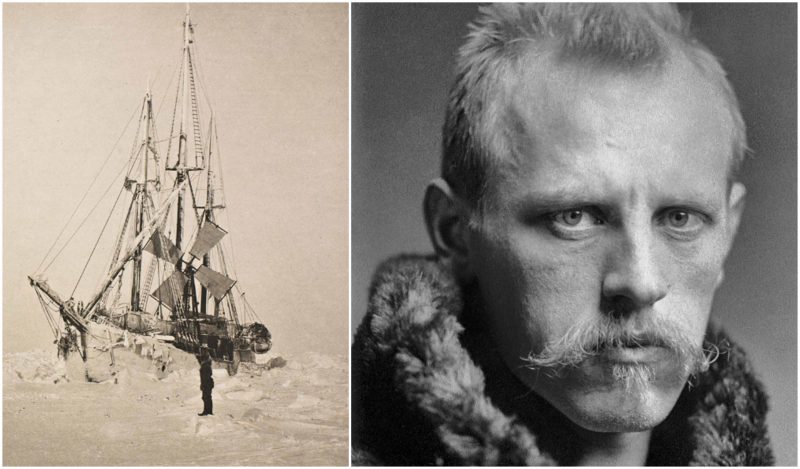Fridtjof Nansen was one of the most remarkable people of his time. An explorer, scientist, and a diplomat and a Nobel Peace Prize laureate, he was also a champion ice skater and skier. In 1888, he became the first man who traversed the interior of Greenland on cross-country skis. During his expedition to the North Pole of 1893-1896, Nansen set a record after reaching the latitude of 86°14′ and gained international fame. Nansen’s life at sea was the most real version of Jules Verne’s books.
His courage and techniques of polar exploration were an inspiration and motivation for many early adventurers and explorers such as Roald Amundsen. And his innovations in clothing and equipment were of great help for the subsequent Antarctic and Arctic expeditions. In the meantime, his knowledge of zoology earned him a doctorate in neurology, a field in which Nansen established the modern theories. While working on his doctorate, he was doing research in the North Atlantic, from which he developed an interest in the field of oceanography.
In 1881, Nansen started studying zoology at the Royal Frederick University in Christiania (the former name of Oslo) where his professor, Robert Collett, gave him the idea to go on a sea voyage and study the Arctic animals. And so he did. In 1882, Nansen sailed off on aboard the sealing vessel Viking. During his journey that lasted over five months, the student collected water samples through which he proved that sea ice forms on the surface of the water, not below, as it was previously believed. He also demonstrated how the Gulf Stream flows beneath a cold layer of surface water.
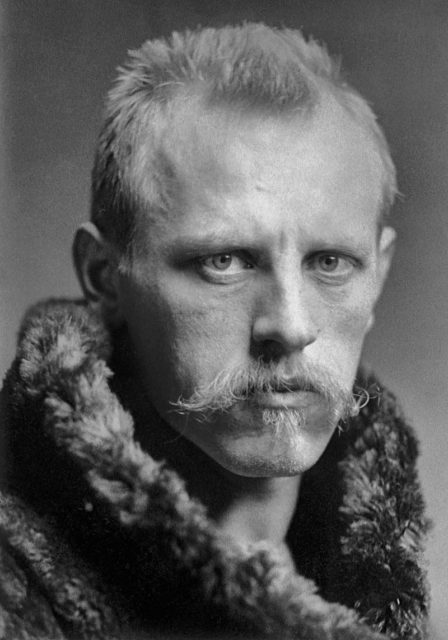
As Vikings sailed between Spitsbergen and Greenland in search of seal herds, Nansen proved himself to be an expert marksman. In July, the sealer got trapped in the ice of an unexplored area of the shore of Greenland. Nansen was curious and got the idea of exploring the interior of the island or even crossing it. After two weeks the ship broke free from the ice and in August the crew got back home.
When he got back to Norway, Nansen accepted an offer from his professor Collett to take the post of curator in the zoological department of the Bergen Museum where he spent the next six years. He went on studying neuroanatomy, a field that was relatively unexplored at the time, concentrating on the central nervous system of lower marine creatures. He took a break of six months for a sabbatical tour around Europe for six months, a time during which he studied and worked with Gerhard Armauer Hansen and Daniel Cornelius Danielssen, but not before he had published a paper in which he defended the neuron theory that was proposed by Santiago Ramon y Cajal. Nansen’s following paper, The Structure, and Combination of Histological Elements of the Central Nervous System, became his doctoral thesis and was published in 1887.
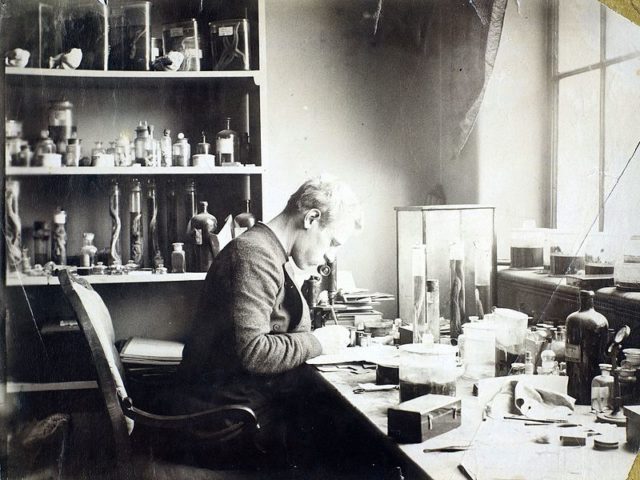
The idea of crossing Greenland left Nansen restless, and he was creating plans of how to perform the trip ever since his return from there in 1882. After the submission of his doctoral thesis in 1887, he started organizing the project. Areas of the island were explored in 1883 by Adolf Erik Nordenskiöld and by Robert Peary in 1886. Both of them had approached the island from the west coast and didn’t manage to travel more than 100 miles (160 kilometers) into the interior before they turned back.
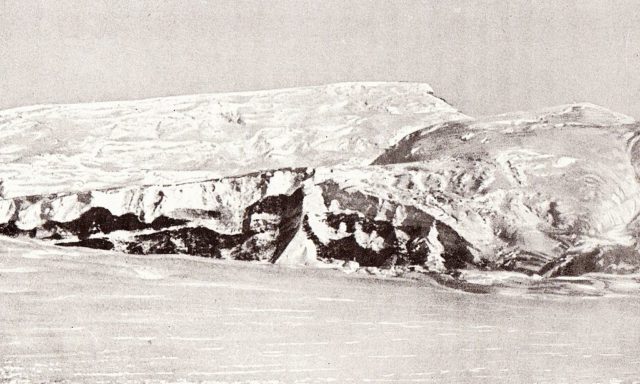
Nansen proposed a new idea, to get to Greenland from the east and to end the trek at Disko Bay, the point where the other two explorers started. His idea was to land somewhere on the east shore of Greenland and without a safe base for the party, to continue going only forward. His idea was that a small expedition of no more than six members had more chances of completing the voyage, rather than the heavy manpower of the previous Arctic ventures. He proposed for all equipment such as cooking stoves, clothing, and sleeping bags to be made from of scratch, while the supplies would be man hauled on lightweight sleds.
His ideas were publicly criticized as dangerous and impossible, accused in the press of planning to throw away the lives of others along with his own. He was refused financial support from the Norwegian parliament due to the high risk of his expedition. However, despite all the diverse publicity, Nansen managed to launch his project with a donation from Augustin Gamél, a Danish businessman. The students at the University organized an effort to collect money for Nansen’s trip, and they made a small contribution as well. Also, there were numerous applications for the expedition by many amateurs adventurers.
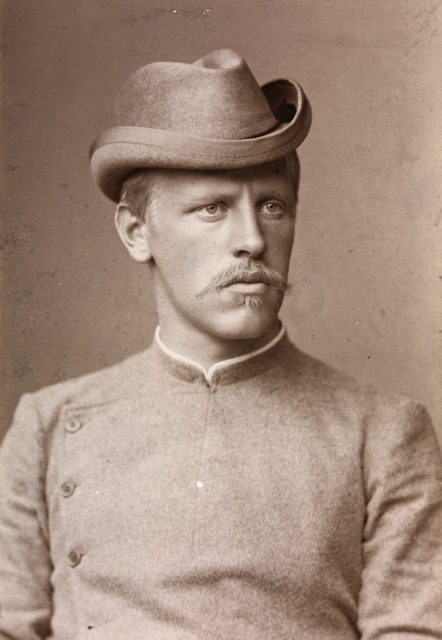
Nansen was seeking men who were expert skiers and was advised that in the far north of Norway, he could find expert snow travelers among the Sami people, from Finland. He recruited two – Ole Nielsen Ravna and Samuel Balto. The other members of the expedition were Kristian Kristiansen, Oluf Christian Dietrichson, and Otto Sverdrup.
Nansen’s voyage started on June 3, 1888, traveling on the sealer Jason from Ísafjörður, a port in the northwest of Iceland. When the coast of Greenland was still 12 miles away, Nansen launched the small boats on the 17th of July and headed southwards. It turned out that the boats couldn’t make their way through the ice, so the party spent most of the time camping on the ice itself. After twelve days the party finally managed to reach land, however, they were still too far south to start the crossing, so after a brief rest, under the order of Nansen, the party got back in the boats and began rowing further north.
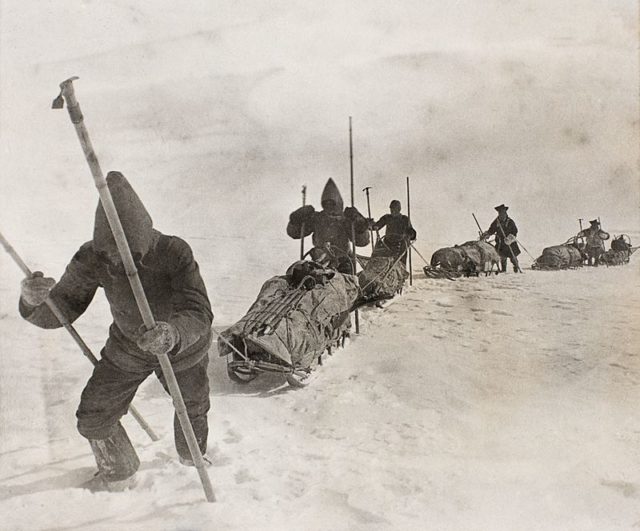
On the 11th of August, after several encounters with the nomadic native population of the island, they reached Umivik Bay. The point was still south of Nansen’s intended starting point, but he decided to finally start the crossing. The six men spent four days at Umivik preparing for the journey before they set out on the 15th of August. They headed towards Christianhaab which was 370 miles away on the east coast of Disko Bay, with the intention to board a boat home from there. But the weather conditions prevented them from making much headway. They also struggled with the inland ice, and once they had to halt for three days due to violent storms.
The last ship was due to leave by mid-September, and on the 26th of August, Nansen realized that they didn’t stand any chance of getting on it. So, he changed the course towards Godthaab (the former name of Nuuk) which shortened their journey by 93 miles. The party still had to climb to the summit of Greenland’s icecap, with an altitude of 8,922 feet above sea level and with temperatures dropping to −50 °F (−46 °C) at night. Going down wasn’t much easier as the weather remained hostile the fresh snowfalls which meant the dragging of the sleds was a much harder task.
On the 26th of September, the party reached the edge of a fjord which ran towards Godthaab. They created a makeshift boat from their tent, parts of the sleds, and some local willows, and rowed down the fjord to reach the town after four days. Nansen’s party accomplished the crossing in 49 days during which time they maintained a detailed report of the geographical and meteorological conditions of a previously unexplored interior.
They were too late to get on any ship, so they remained at Gothaab for seven months until the following spring. They befriended the local inhabitants, and spent their time studying their lifestyle, learning fishing and hunting techniques from them.
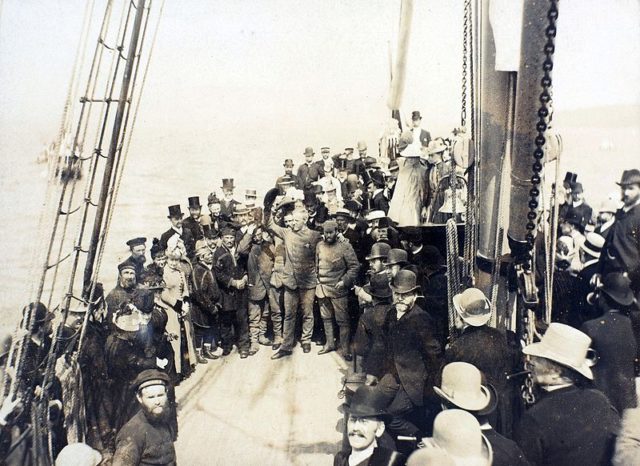
Nansen and his men left Godthaab on April 15, 1889. The party was welcomed as heroes in Copenhagen and also in Christiania, where a third from the city’s population came out onto the streets to greet the explorers. After his arrival back home, Nansen with few other people formed the Norwegian Geographical Society. He also accepted the job as curator at the Royal Frederick University’s zoology collection. That same year, 1889, Nansen married Eva Sars, a celebrated classical singer. It took everyone by surprise since Nansen had stated previously that he didn’t believe in the institution of marriage. He also received an offer to lead an expedition to Antarctica, but he refused, claiming that explorations of the North Pole would serve the interests of Norway better.
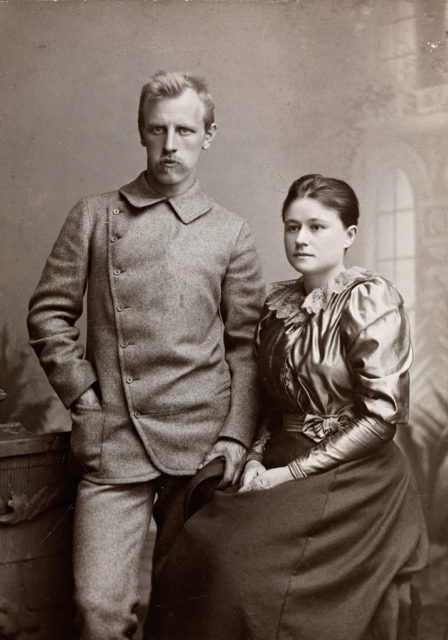
In 1890, Nansen announced his idea of reaching the North Pole. This time, the Norwegian parliament willingly funded his project. A special boat, the Fram, was designed for Nansen’s trip by the naval architect and leading shipbuilder in Norway, Colin Archer. There were thousands of applicants to join the expedition, of whom Nansen chose only twelve. Dog-driving expert and Army lieutenant Hjalmar Johansen had to sign as the ship’s stoker because it was the only available position.
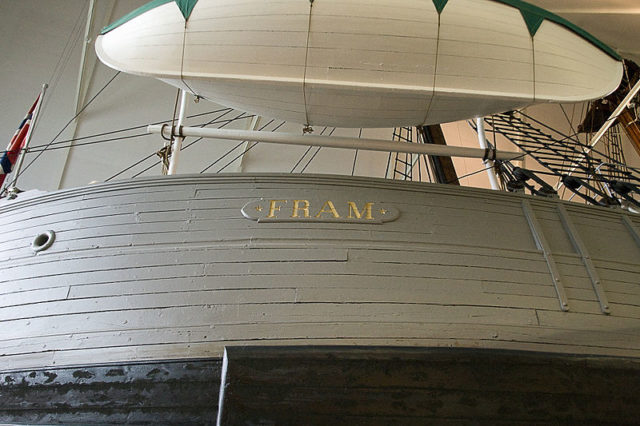
On the 24th of June 1893, Fram left the port at Christiania and followed the North-East Passage along the northern coast of Siberia. Ice conditions and fog impeded the progress. The crew also experienced the phenomenon of dead water, first described by Nansen, which is a friction that impedes the progress of a ship caused by a layer of fresh water that lays on the top of a heavier salt water.
At the end of March 1894, as the progress was slow and constantly impeded, Nansen calculated that it would take five years for the ship to reach the pole. Fram was barely moving more than a mile a day, so in November, Nansen announced a new plan. He would leave the Fram along with Hjalmar and the sled dogs and try to reach the Pole by land from there. After that, the party of two would travel to the recently discovered and mapped Franz Josef Land, from where they could reach Spitzbergen.
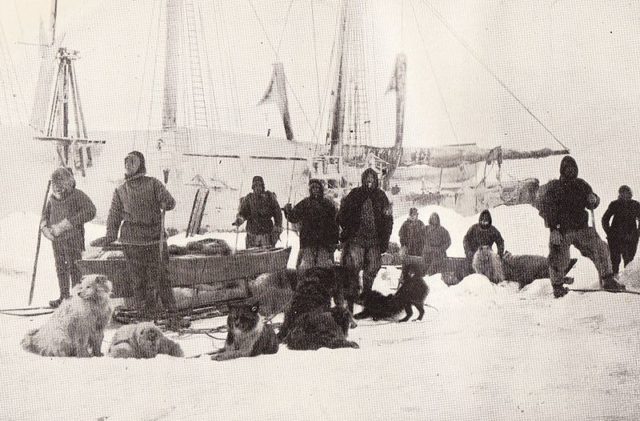
The rest of the winter 1894-95 was spent preparing equipment and clothes for the sled journey. Kayaks were constructed for the crossing of open water, and on the 14th of March 1895, the two men began their journey. After one week they were ahead of their schedule, traveling nine nautical miles a day, but in fact, instead of progressing to the north, they marched towards a southerly drift.
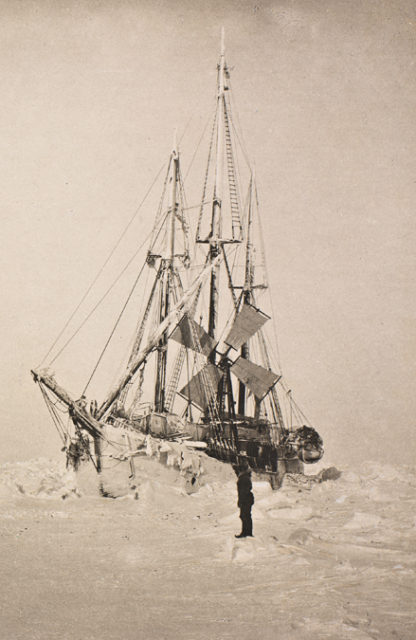
Soon, Nansen began to wonder if the trip would be possible at all. On the 7th of April, at a latitude of 86°13.6′N, the party turned south. On the 24th of April, the situation was so desperate they even started killing their dogs to feed the others. By the 6th of August, when they reached the edge of the ice, they killed the last surviving dog, lashed the two kayaks together, and made for land.
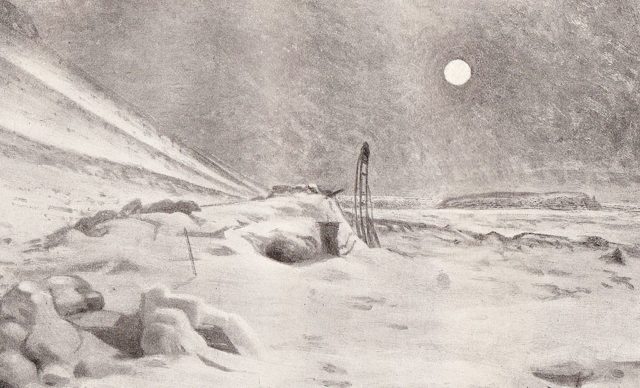
Nansen and Johansen made it to the Franz Josef Land, but it wasn’t until the 19th of May 1896 that they were finally able to resume their journey. A month later, they had to stop to repair their kayaks as they were attacked by a walrus. Nansen believed that he heard voices and dogs barking and he went to investigate. He met Frederick Jackson, a British explorer, leading an expedition to Franz Josef Land, who immediately recognized Nansen. Hence, the British crew saved the Norwegian explorers bringing them safely to the European ports.
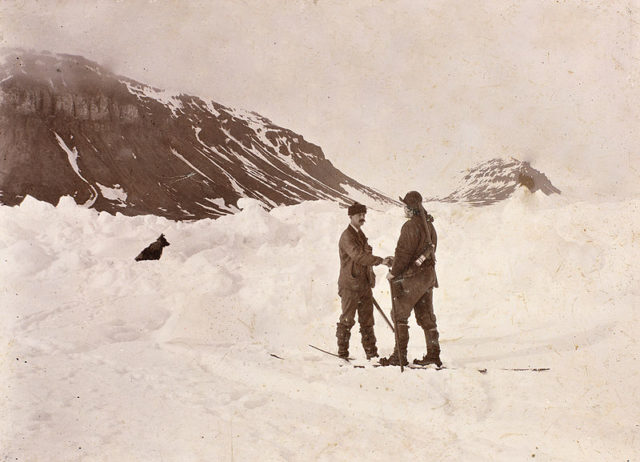
As soon as he got back, Nansen was asked to write an account of the voyage. Most of his later life was based on teaching at universities as one of the biggest experts on sealife. He also worked as a diplomat, taking the post of representative of Norway in London.

Nansen became the president of the Norwegian League of Nations Society, and in 1920, one of the three delegates to the League’s General Assembly. At this position, he organized the repatriation of half a million prisoners of war, stranded in various parts of the world for which he was awarded the Nobel Peace Prize in 1922.
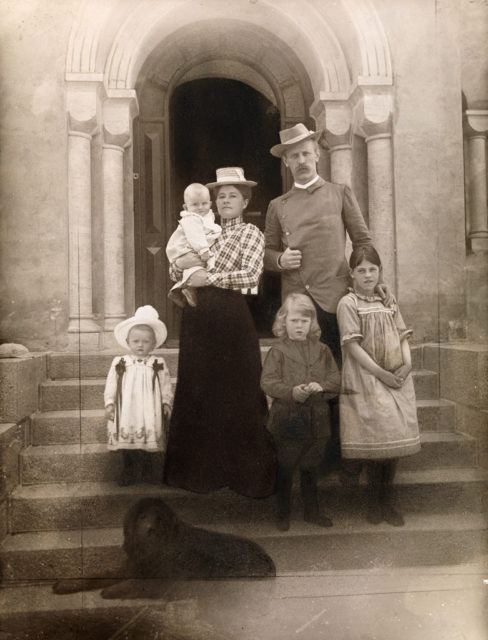
The great explorer died of a heart attack in 1930, at the age of 68. He always stated himself as an atheist, so he was given a non-religious, state funeral before cremation. His daughter Liv revealed that the funeral was held without speeches, only music – “Death and the Maiden” by Schubert, which his wife Eva used to sing.
The man worked with passion and devotion and with all the things he accomplished it seems like he had the time for two lives. First as one of the greatest explorers in the world, and then as a diplomat and politician who was even awarded the Nobel Prize.
